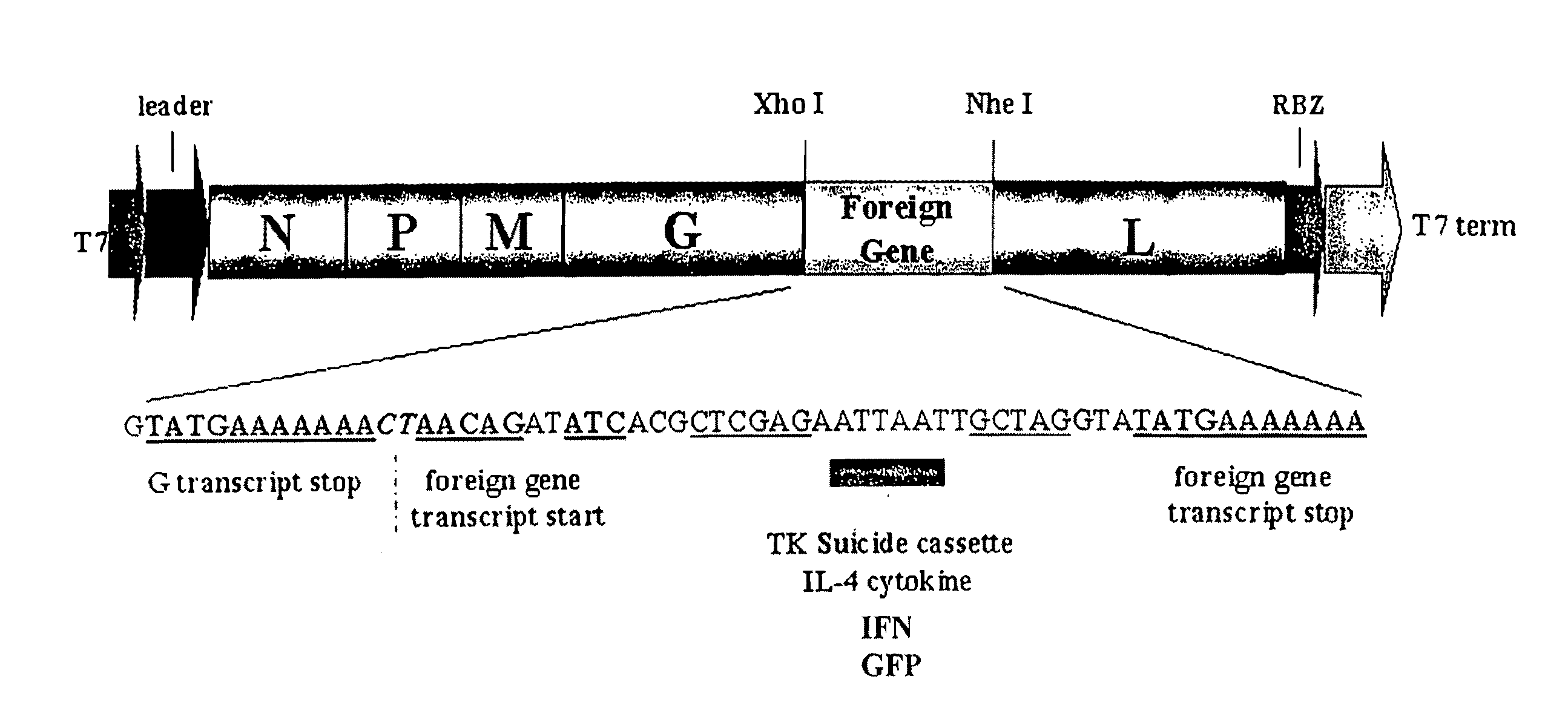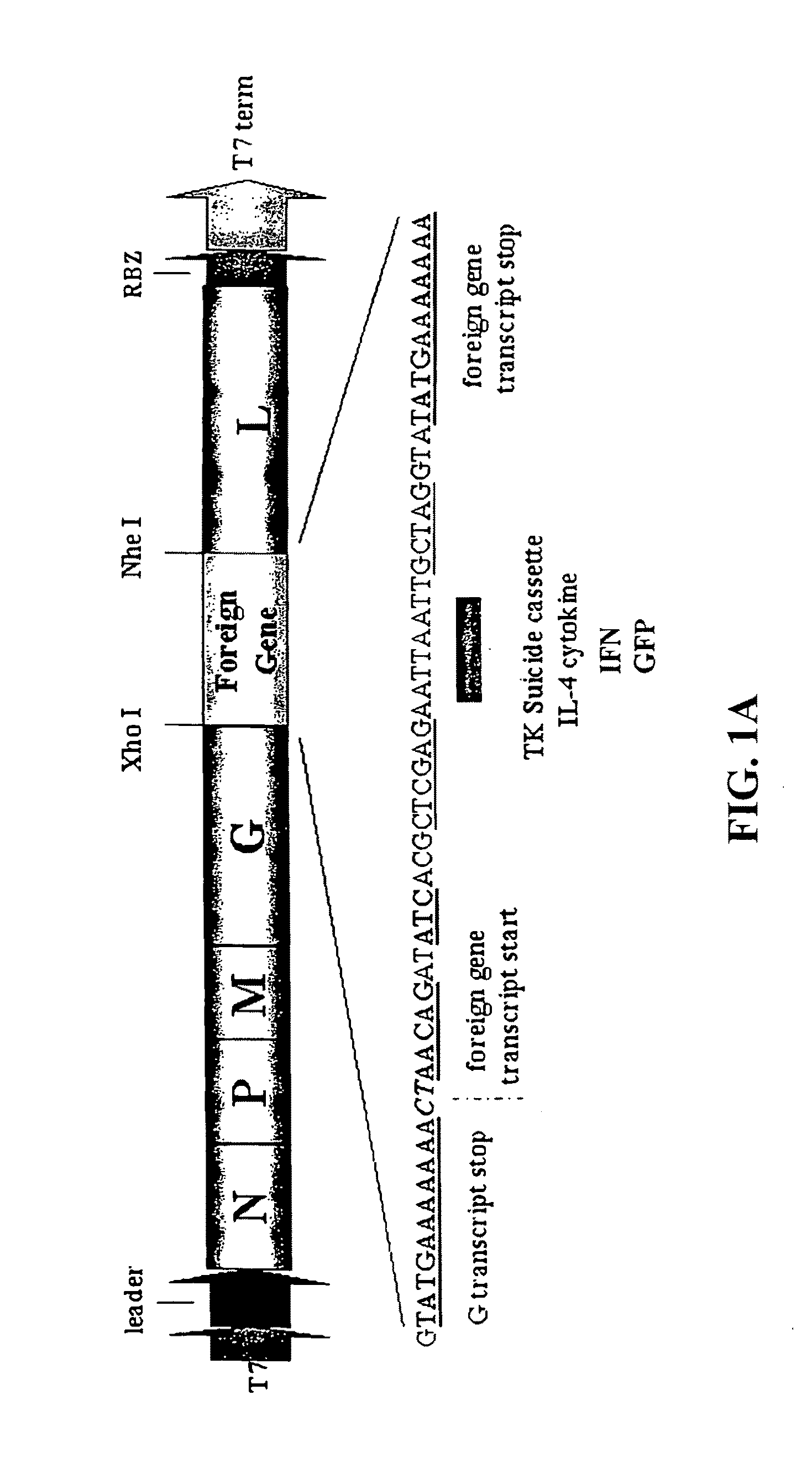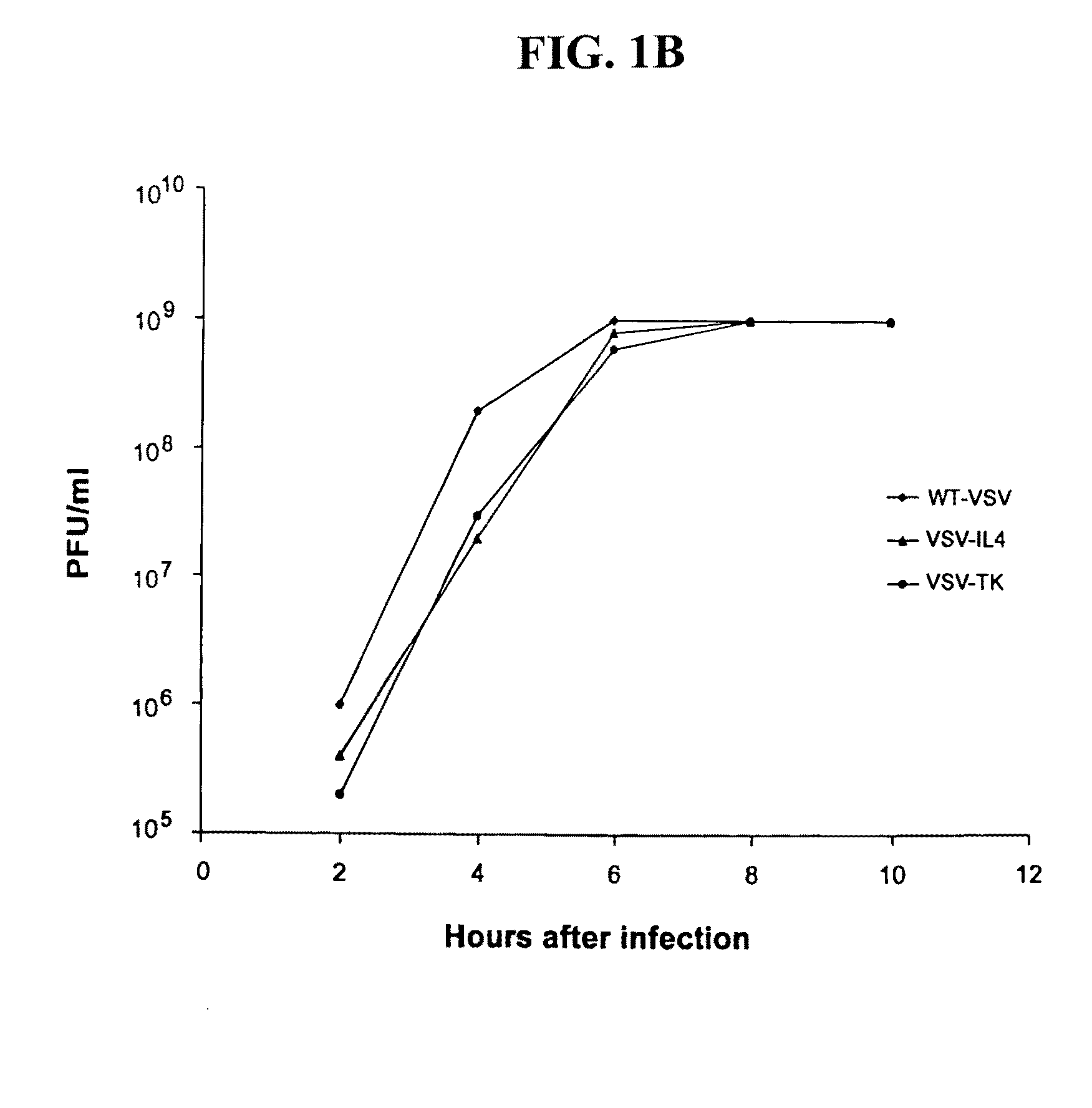Recombinant VSV For The Treatment of Tumor Cells
a recombinant vsv and tumor cell technology, applied in the field of vesicular stomatitis virus, can solve the problems of impaired host defense mechanisms required to prevent vsv replication
- Summary
- Abstract
- Description
- Claims
- Application Information
AI Technical Summary
Benefits of technology
Problems solved by technology
Method used
Image
Examples
example 1
Materials and Methods
Experimental Protocol
[0130]Cell lines. BHK-21 and B16(F10) melanoma cells were obtained from American Type Culture Condition (ATCC, Manassas, Va.). BHK cells were grown in Dulbecco's Modified Essential Medium (DMEM) containing 10% fetal bovine serum (FBS, Hyclone Laboratories Inc, Logan, Utah). B16(F10) cells were propagated in similar medium except that it contained low sodium bicarbonate (1.5 g / L). D1-DMBA3 breast tumor and DA-3 cells derived from the tumor were a gift from Dr. Diana Lopez (University of Miami, Miami, Fla.). Human primary cells (microvascular endothelial-HMVEC) were obtained from Clonetics Corp (San Diego, Calif.) and grown according to the manufacturer's specifications.
[0131]Construction of recombinant viruses. The IL-4, TK and GFP inserts were amplified from pGexp, pKO-TK and pLEGFP-C1 (Clontech Laboratories, Palo Alto, Calif.) plasmids respectively by PCR. For IL-4, the primers 5′ GGCACTCGAGATGGGTCTCAACCCCCAGCTAGTTG and 5′ GCCGTCTAGACTACGAG...
example 2
Generation of rVSV Expressing TK or IL-4
[0140]To evaluate whether VSV could be generated to express potential anticancer genes, the HSV-TK, mouse IL-4 or, control green fluorescent protein (GFP) were cloned into the plasmid pVSV-XN2, as additional transcription units between the VSV G and L genes (FIG. 1a). Recombinant VSVs expressing either TK, IL-4 or GFP from the modified transcription unit were recovered in cells expressing the full-length antigenomic VSV RNA containing the additional gene as well as the VSV nucleocapsid (N), phosphoprotein (P) and polymerase (L) proteins. Preliminary analysis indicated that viable recombinant viruses could be obtained in all cases and examination of virus production per cell, by one-step growth curve studies, indicated no aberrant variation in replication abilities compared to the wild-type VSV (FIG. 1b). Indeed, all viruses grew to exceptionally high titers of approximately 109 plaque forming units (pfu) per ml. We next determined whether the ...
example 3
rVSV Expressing TK or IL-4 Retain Oncolytic Activity
[0142]To evaluate whether the recombinant viruses expressing IL-4 or TK retained their ability to preferentially replicate in malignant cells, to eventually induce cell death, a number of transformed cells were examined in infection assays. An important objective was also to compare the effects of VSV and recombinant VSVs on normal cells. To start to appraise this, we selected human microvascular endothelial cells (HMVECs) since they would be most likely to be exposed to VSV infection after subcutaneous (s.c.) or intravenous (i.v.) administration in tumor therapy. HMVECs (106) were therefore infected at an m.o.i of 0.1 for 18 hours with wild-type VSV or VSV-IL-4, VSV-TK or VSV-GFP. Cell viability was measured using Trypan Blue exclusion analysis and revealed that approximately 20-30% of the HMVECs underwent cell death, an effect that could be essentially eliminated following pre-treatment with interferon (IFN-α) [FIGS. 3a and d]. I...
PUM
| Property | Measurement | Unit |
|---|---|---|
| pH | aaaaa | aaaaa |
| diameter | aaaaa | aaaaa |
| heat shock | aaaaa | aaaaa |
Abstract
Description
Claims
Application Information
 Login to View More
Login to View More - R&D
- Intellectual Property
- Life Sciences
- Materials
- Tech Scout
- Unparalleled Data Quality
- Higher Quality Content
- 60% Fewer Hallucinations
Browse by: Latest US Patents, China's latest patents, Technical Efficacy Thesaurus, Application Domain, Technology Topic, Popular Technical Reports.
© 2025 PatSnap. All rights reserved.Legal|Privacy policy|Modern Slavery Act Transparency Statement|Sitemap|About US| Contact US: help@patsnap.com



